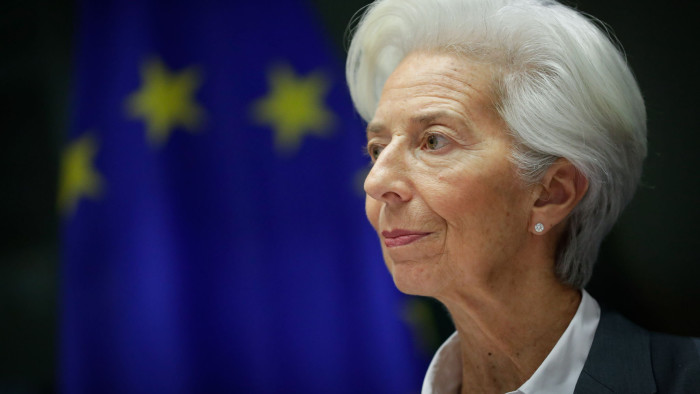Banks labour under negative interest rates and ‘zombie’ loan threat

Roula Khalaf, Editor of the FT, selects her favourite stories in this weekly newsletter.
When bank executives descended on Davos last year for the annual meeting of the world’s elite, they did so under a cloud. Just a day before the gathering began, UBS issued a profit warning after its predominantly rich clients pulled $13bn of assets from the bank.
Here was Switzerland’s largest bank and one of the top global wealth managers sending a distress signal from its own doorstep. The world’s wealthy had apparently turned bearish on the economy because of geopolitical tensions and sluggish growth.
It proved to be a sign of things to come. The outlook for global banks has since only deteriorated. In September, the European Central Bank cut rates further into negative territory, putting extra pressure on banks’ profit margins. The Federal Reserve cut US rates three times in 2019, reversing almost all of the increases implemented in 2018.
Moody’s, the rating agency, cited lower rates as one of the main factors behind its decision last month to change its outlook for global banks from stable to negative. Driving this are “rising global trade tensions [and] lower for longer or lowering interest rates, depending on the jurisdiction”, says Laurie Mayers, associate managing director at Moody’s.
Ms Mayers adds that banks are operating with “very high cost structures” that they are “struggling to bring down”. Improving cost efficiency is particularly tough when banks are having to invest billions of dollars in new digital platforms to compete with fintech start-ups. The spectre also looms of Big Tech companies like Amazon and Google pushing further into financial services.
Other observers are less bearish. Analysts at Morgan Stanley recently turned positive on the European banking sector, though not because they predict a glorious period ahead, but rather because the worst might be over.
Magdalena Stoklosa, Morgan Stanley head of European banks research, notes that interest rates, in Europe at least, have probably reached their nadir. Few expect Christine Lagarde, the new ECB president, to implement further cuts.
“Yes, we are going to stay in this lower for longer structural backdrop and of course [profit] margins are going to be challenged,” Ms Stoklosa says. But she adds that, given the sense that rates may go no lower, “the confidence in earnings is much higher than it was a couple of months ago.”

Ms Stoklosa adds that in the third quarter of 2019, 80 per cent of eurozone banks managed to beat earnings expectations, albeit after they were revised lower by analysts. “Analysts have spent the last six months relentlessly cutting our earnings expectations for the banks, particularly for 2020. And I think we’re done, or we’re broadly there.”
Signs suggest that global regulators think that banks have enough capital, after a decade during which lenders were forced to build their buffers to prevent a repeat of the 2008 financial crash. The higher requirements have dragged on profitability, while crimping the amount of excess capital that banks can return to investors by way of dividends or buybacks.
The introduction of new global rules on capital — commonly known in the industry as Basel IV — had raised fears that the buffers would have to be built further when the standards are implemented from 2022. But Randy Quarles, the Fed governor in charge of financial regulation, last month told a congressional panel that overall capital levels at US banks did not need to rise. “We don’t believe that the aggregate level of loss absorbency needs to be increased,” he said.
The ECB is tweaking its rules to make it easier for banks to use debt rather than equity to meet the requirements, giving banks more leeway when deciding whether to return capital to shareholders. The Bank of England last month said it would consult on reforms that would “leave overall loss-absorbing capacity in the banking system broadly unchanged”.
“It looks like Basel IV will be the biggest non-event in the history of capital regulation,” says John Cronin, a banks analyst at Goodbody.
Even if some risks for banks do start to recede, however, there are new threats on the horizon. They include a surge in loans to highly indebted companies that could quickly fall into difficulty in the event of a recession and struggle to make their repayments.
Last month, the Bank of England warned that the global stock of “leveraged loans” — which tend to be made to highly indebted companies, especially those owned by private equity — had reached more than $3tn, a 30 per cent increase since 2015.
The threats associated with leveraged loans have not escaped the attentions of the organisers of this year’s gathering in Davos. They have scheduled a session entitled “The Rise and Risk of Zombie Firms”. The programme asks: “With cheap money keeping fragile companies on life support, will a recession cause a reckoning in corporate debt?”
If the answer turns out to be an emphatic “yes”, bankers can count on more downbeat Davos gatherings to come.

Comments